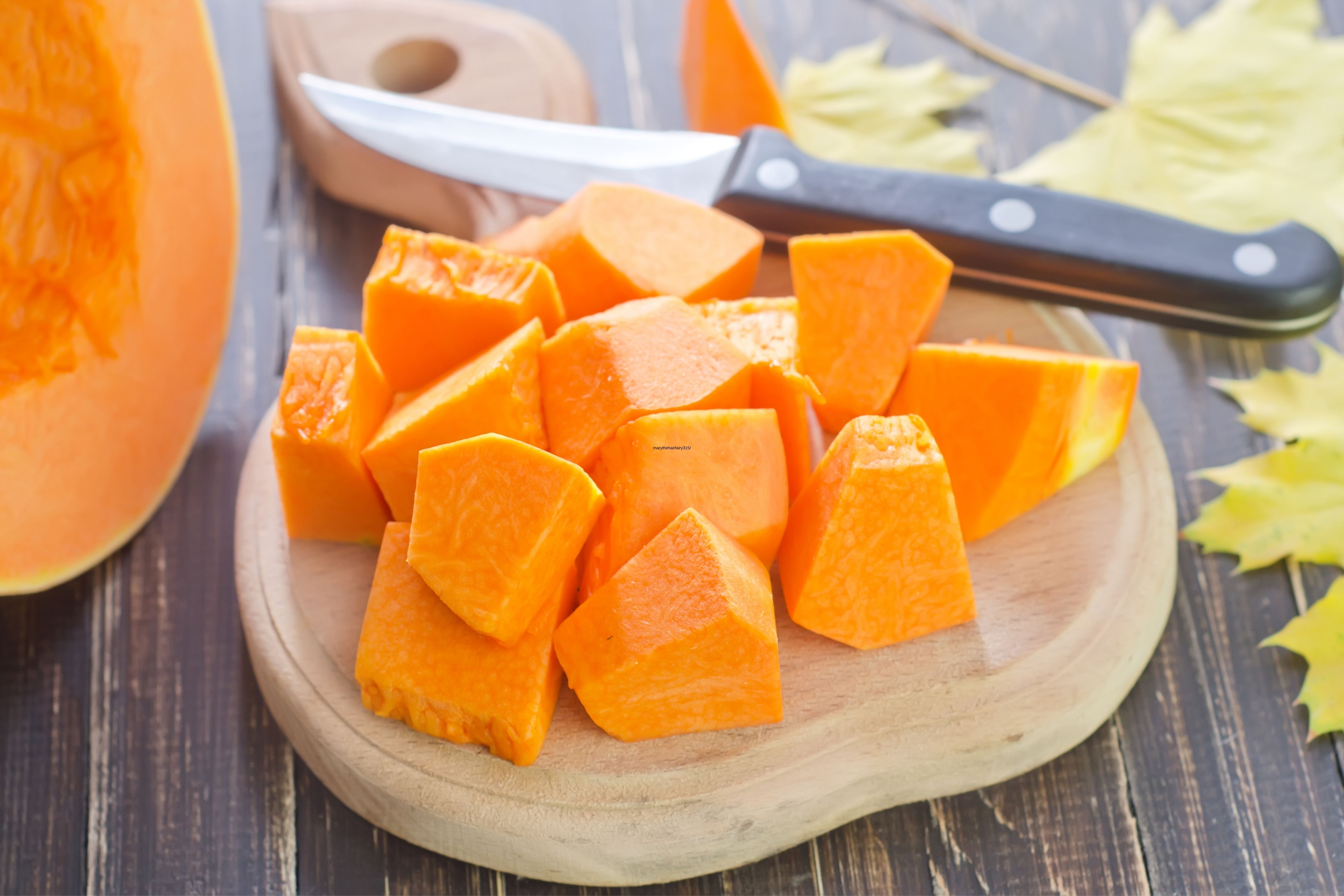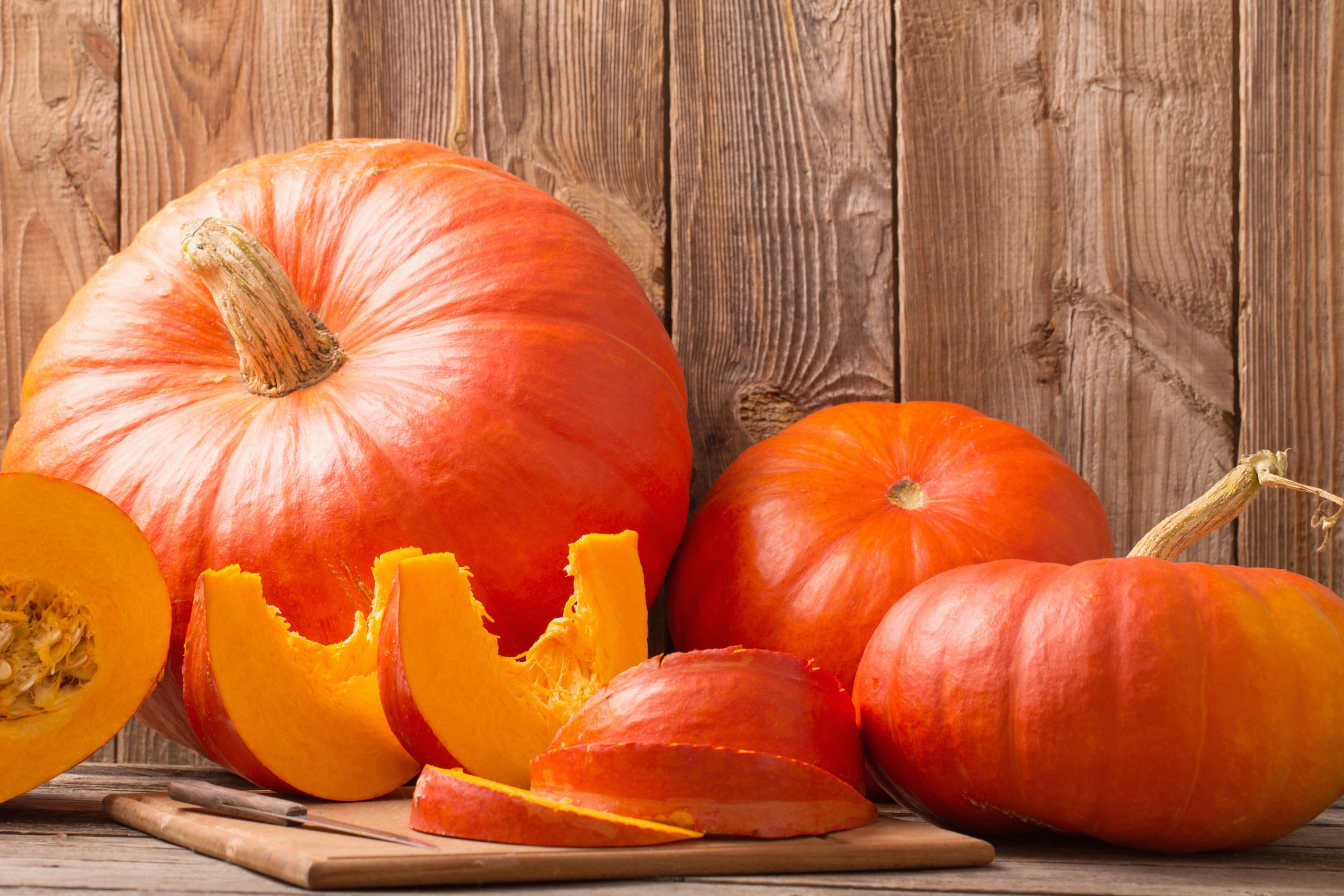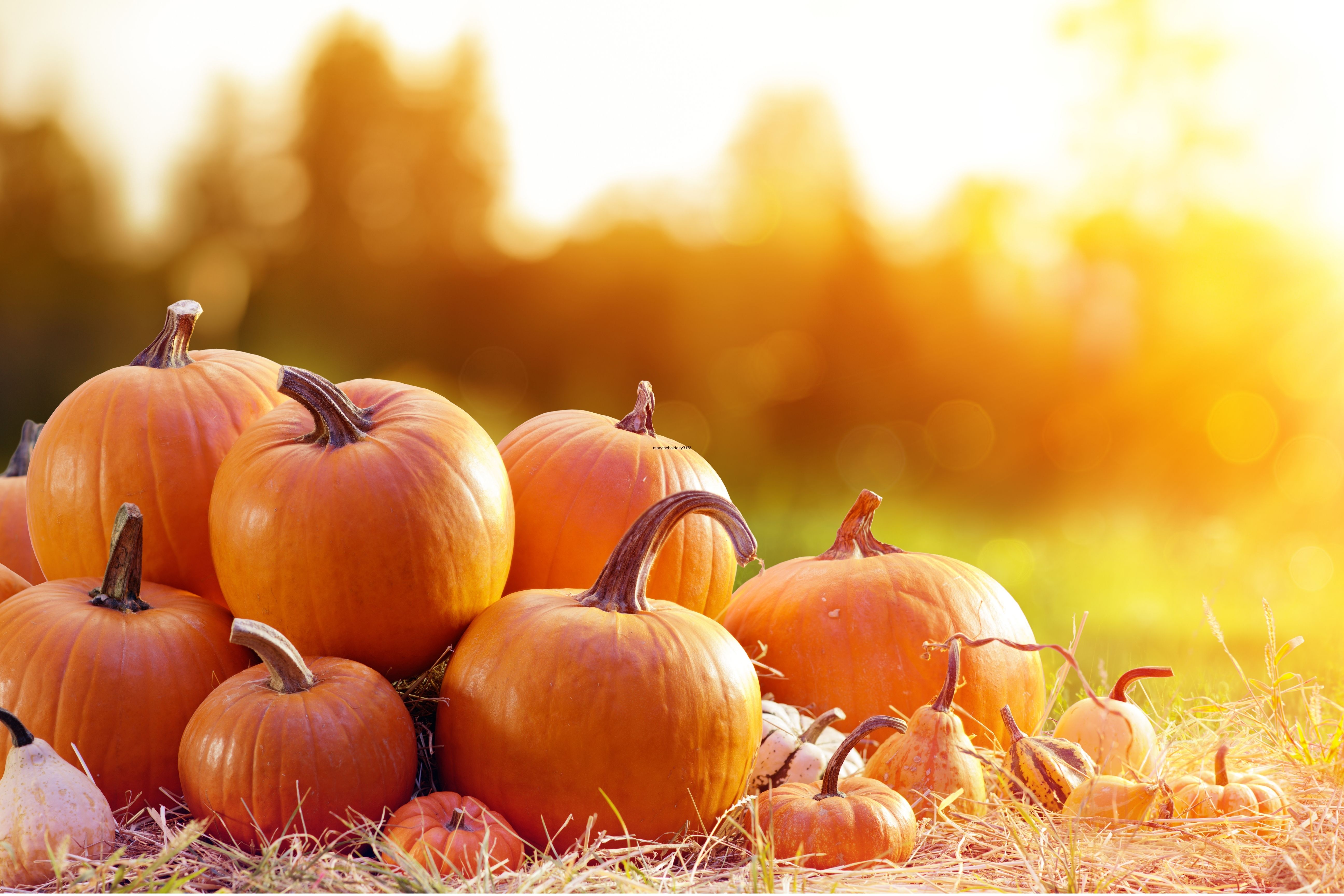Not everyone loves pumpkins, but these vegetables are really versatile when it comes to consuming them! They can be baked in the oven, cooked, boiled, or even eaten raw! And of course, let’s not forget about our favorite pumpkin pie.
But when it’s time to pick the ripest veggie for cooking it, most of us would be confused. Indeed, how to tell if a pumpkin is ripe? Well, we know several hints that work all the time.
How to Tell If a Pumpkin Is Ripe Enough to Eat?
When you are in a supermarket choosing a pumpkin for your culinary exercises, how do you know which one of them is the ripest? We can suggest you one of the following pumpkin-ripeness indicators:
- The vegetable must have a bright orange color all around it
- If you give a pumpkin a thump, a ripe veggie will sound hollow
- The skin of your pumpkin is hard
- The stem is also hard
Now let’s explain each of these positions in a more detailed way. First of all, it is the color. See, if a pumpkin is fully ripe, it will have that significant Halloween-style bright orange color that we all know so well. However, it is good to know that some sorts of this vegetable will reach their full ripeness when still being green! So color is, of course, the indicator, but we would still recommend you relying on other signs, too.
So even if the pumpkin you laid your eye on is fully orange, don’t rush to the store counter with it! Give the veggie a couple more checks. For instance, a good way to see if the pumpkin is ripe is to give it a good thump! Yep, slapping a veggie may look odd but if the pumpkin sounds hollow, it is surely ripe.
Another way to tell that your vegetable is ready to be consumed (or picked) is to check its skin and stem. When checking the skin, try to puncture it with your fingernail accurately. If the skin dents but doesn’t puncture anyway, the pumpkin is ripe. As for the stem, it must be hard. Only in this case can you be sure that the vegetable is ready to be consumed.
But what if the pumpkin you are dealing with is slightly different? How do we know when a green or white pumpkin is ripe, for example?

How to Tell If a Japanese Pumpkin Is Ripe?
Japanese pumpkin, also known as kabocha, has green skin. So you can’t rely on its color to define ripeness, you may ask? What shall we do then? How to tell if a kabocha pumpkin is ripe? Well, the simplest way to define whether it is ripe or not is to still check the color!
Even though kabocha is green itself, you can tell that it is ripe if its bright green stripes become dull green instead. And of course, remember to check the stem for hardness!
How to Tell If a White Pumpkin Is Ripe?
With white pumpkins, it may seem to be even harder! If it is white, how do we know when it is time to pick the vegetable? Well, take a look at its skin again. The color must be of even whiteness, with no greenish areas, and the rind must be hard.
Also, if you scratch a ripe vegetable with your fingernail, you will see it is hard to leave any marks on its skin.

How to Tell If Acorn Pumpkin Is Ripe?
Acorn pumpkins get ripe vise-versa in comparison to sugar pumpkins, for example. That means an acorn pumpkin can be considered ripe if it is fully dark-green. Only the area that has been in contact with the ground will be yellow or orange.
So now that you know how to tell whether different sorts of pumpkins are ripe or not, it will be simpler for you to spot the veggie that is ready to be cooked and consumed.
How to Harvest Pumpkins?
Since now you are aware of the basic methods of checking the level of ripeness of a pumpkin, it will be good to learn how to harvest the veggie correctly.
First of all, always make use of a sharp knife. Like this, you will not leave a jagged cut on the stem which might lead to various diseases getting into the vegetable and making it rot.
Also, be sure that, when harvesting a pumpkin, you leave a long enough stem (from 7 to 12 cm). Like this, you will significantly slow down the rotting process, and your pumpkin will last longer both for eating and/or displaying.
Disinfecting pumpkins is another necessary step. Simply wipe it down using a 10 percent bleach solution. What for? Well, it will destroy all the harmful organisms and bacteria on its surface that may speed up the rotting process. And even if you are going to eat the vegetable, don’t worry. The disinfecting solution will evaporate in a few hours leaving the pumpkin completely harmless for you to consume.
With these simple suggestions, you will easily extend the vegetable’s shelf life after picking it.

Storing Your Pumpkin Whole. Tips And Recommendations
Finally, you harvested your pumpkins or simply bought a nice and ripe vegetable in a local store. What’s next? How to make it last longer?
Pumpkins can not be called very picky or difficult vegetables when it comes to storing them at home. However, everyone needs to learn and remember several useful storage rules that will allow you to keep the vegetable ripe and fresh longer.
- Keep your pumpkin away from the direct sun
- To achieve better results, keep a ripe whole pumpkin in a cool place, such as a garage
- Keep the pumpkin upside down with its stalk on the bottom
- Never place pumpkins directly on the floor! Instead, spread a piece of cardboard as a mat between the vegetable and the floor
Like this, your vegetables will last way longer, approximately from three to four months.

How to Stock Cut Pumpkins?
What about the pumpkins that have already been cut? Well, if you have veggies that were diced or cut in slices, storing them will require a somewhat different approach since after being cut, any raw vegetable becomes more predisposed to rotting which also tends to happen faster.
To make your cut pumpkin last longer, you can do the following:
- Store it refrigerated being wrapped in a cling film tightly
- As an option, you can make use of a beeswax wrap, but then you will have to delete the seeds first
No matter what kind of wrap you choose, your pumpkin will sooner or later develop a thin layer of white mold. If the vegetable is still firm, that layer can be cut off (with one or two extra centimeters of flesh beyond it) and the pumpkin can still be consumed.
But if you see that the pumpkin flesh around that mold is soft and wet with the signs of grey or black mold, discard such a vegetable since it is not safe to eat anymore!
With these tips, you will be able to enjoy a fresh pumpkin much longer!
[wp-faq-schema title=”Frequently Asked Questions”]

Hello! I’ve recently bought two really big pumpkins at the farm market, and now I need to preserve them somehow since we will not finish them fast enough! Does anyone know whether pumpkins can be frozen?
Hi! Yes, pumpkins can be frozen, and by the way, you can preserve both a cooked and a raw vegetable this way! I prefer pre-cooking it since after thawing, I will not have to waste time on preparing it.
If you decide to freeze it in a cooked state, I would recommend either puree it or preserve it by cutting it into quite large pieces.
With the raw pumpkin, it’s all simpler: just dice it and keep in freezer-safe bags.
My family loves pumpkins, we cook them almost every week! But it seems that we ran out of the recipes. I want to try to cook pumpkin in a new way, so I was wondering if somebody could suggest to me a couple of fresh cooking ideas? Thanks in advance!
Hello! Well, I don’t know what dishes you already cooked using pumpkins, but in my family we often make soups, pumpkin puree, we also bake it in the oven with sugar as a dessert. But I personally like pumpkin cannelloni with cheese, pumpkin pancakes, baked pumpkin frittata, and pumpkin quiche.